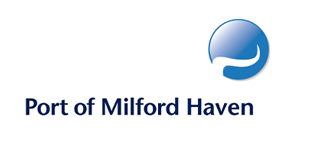Investment in port infrastructure is an essential component in the development of offshore wind in the Celtic Sea.
Currently, no Port in Wales has the capacity to fully deliver all the functions and services required to deploy a floating wind development.
With the right investment in place, its clear Wales will have a once-in-a-generation opportunity to establish a major manufacturing and logistics support hub in South Wales and enable new low-carbon industries to co-locate in the region, creating new high-quality jobs and safeguarding existing industries in the process.
Green Economy Wales spoke with Andy Reay, Head of Offshore Wind at ABP about support they need from Welsh and UK Government, the level of investment that will be needed within ABP facilities in Port Talbot and more specifically, what any investment will be spent on.
Steven Edwards, Commercial Director at Port of Milford Haven, talks to Green Economy Wales about how investment in port infrastructure can help unlock over £50 billion for the Welsh economy.
Having enough key side space and layer part space for all the equipment that you need in addition to having the depth of water for some of these floating platforms is essential.
David Jones, Stakeholder Manager at Blue Gem Wind, explains the scale of the solution needed to within our ports to build and deploy infrastructure.
Jay Shepperd of Marine Energy Wales, reinforces the importance of ports being the gateway to the supply chain opportunities that will be created.
First-mover advantage is key to grasping this opportunity and capturing the full benefits of FLOW deployment and growth, giving Wales a competitive edge over rival hubs in Ireland and Europe and creating significant export opportunities. With the right policies and investment in port infrastructure, Wales can grow port centric manufacturing linked to clean energy provision and spark a process of wider reindustrialisation and regeneration in South Wales.
A port could be used for different stages of floating wind farm construction:
- Pre-fabrication – Pre-fabrication of substructure components (steel or concrete).
- Assembly – Assembly of substructures using pre-fabricated substructure modules (steel or concrete).
- Wind Turbine Generator (WTG) Staging – Wind turbine staging and installation on substructures.
A number of well-placed ports have been identified to offer services in floating wind farm construction (component pre-fabrication, substructure assembly, WTG assembly and mooring system staging).
Ports not suitable for the construction phase, mainly due to limited available space, could be used as O&M bases, which have significantly smaller footprint requirement at the port.
Some of the areas under consideration within port infrastructure include:
Fabrication, Assembly and Staging – Port Talbot seems capable of being upgraded to take on the whole process, from fabrication to deployment. The upgrades necessary for this are significant and go beyond plans that the port already has in place.
Assembly and Staging – There are three ports (Port of Mostyn, Port Talbot and Pembroke Dock) that could, after investments beyond those already planned, host both substructure assembly and wind turbine staging. For two of these ports, the investment and restructuring would be significant, and there remain concerns which could prevent the benefits from being realisable.
Wind Turbine Staging – Two ports, Port of Holyhead and Pembroke Dock, already have investment plans that, if completed, would allow them to host wind turbine staging. A further two ports, Port of Mostyn and Port Talbot, could join these if they invested in significant, currently unplanned, infrastructure upgrades.
Mooring Staging – Three ports, Port of Mostyn, Port of Pembroke Dock and Port Talbot would have the capacity to handle mooring and anchoring staging once planned upgrades are in place.
Mooring line (typically steel chain or synthetic rope) fabrication would be performed in dedicated facilities, whilst anchors could be fabricated at a port. It has been noted that there is a lack of capacity for their manufacture of conventional mooring chains globally.
It is understood that Tata Steel in Port Talbot produce steel suitable for mooring chains and it has been suggested that there are companies interested in developing mooring chain manufacturing facilities in Wales if there were a suitable investment case.
Electrical cable fabrication would be performed in dedicated facilities (e.g., Prysmian in Wrexham) and taken directly to the site for installation using a cable laying vessel without a need for intermediary port facilities. While Prysmian do not currently have an ‘end to end’ process in Wales, this could be developed if there were sufficient evidence of demand to justify investment.



